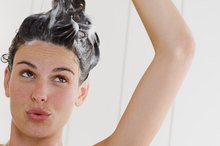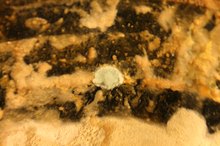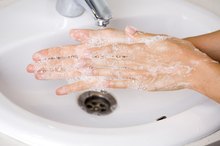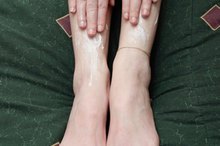Bleach Allergy & Rash
**Bleach is an allergen contained in many household cleaning products 3.
If you are experiencing serious medical symptoms, seek emergency treatment immediately.
** As with many cleaning products, bleach can cause an allergy that produces a rash or rash-like symptoms 3. This allergy, however, can be avoided and treated, and there are also alternatives to bleach.
Bleach
Bleach is a chemical that will alter the chemical bonds of an item in a way so that it absorbs less visible light or none at all. Bleaches come in many different packages. **Sodium hypochlorite, lemon juice and sulfur dioxide are all examples of bleaches.
** Bleach is used in many ways: to clean clothing; to disinfect and kill germs and bacteria; and to lighten the color of hair, teeth, skin and food. An example of an everyday item made possible by bleach is white paper.
- Bleach is a chemical that will alter the chemical bonds of an item in a way so that it absorbs less visible light or none at all.
- Sodium hypochlorite, lemon juice and sulfur dioxide are all examples of bleaches.
Allergy and Rash
Allergic Reaction to Hair Product: Scaly Dry Rash on Neck
Learn More
Bleach is one of the most common allergies found in homes all over the world 2. An allergy is a reaction the human body has to foreign proteins. The reaction causes histamines to be released.
Commonly, a bleach allergy will cause swelling, inflammation and redness at the site of contact. Painful itching may also occur. Scratching the itch will make the pain and allergic reaction worse.
The cause of bleach allergies is unknown but it is suspected that frequent exposure to bleach may be the culprit 2. Those in the housekeeping and laundering industry, and homemakers are at high risk for bleach allergy.
- Bleach is one of the most common allergies found in homes all over the world 2.
- Commonly, a bleach allergy will cause swelling, inflammation and redness at the site of contact.
Prevention/Solution
Preventing an allergic reaction to bleach is the best solution to the problem. The best way to do so is to stay away from any bleaches. This means keeping away from most common household cleaners and detergents. There are also options for those affected by a bleach allergy.
Cooling lotions, such as those used for poison ivy, can help combat the reaction, and ice packs may help as well. If the reaction is severe, one should seek professional medical attention and may be prescribed a steroid to reduce inflammation.
- Preventing an allergic reaction to bleach is the best solution to the problem.
- There are also options for those affected by a bleach allergy.
Warning
Allergy to Cardboard
Learn More
Those with an allergy to bleach should avoid certain chemicals. Chlorine is a popular additive in many household cleaners.
Chlorine is a lung and eye irritant, and can cause toxic fumes when mixed with ammonia or acid-based cleaners. Phosphates are minerals that act as water softeners and are frequently contained in automatic dishwasher detergents.
Alkylphenols are found in some laundry detergents, disinfecting cleaners, all-purpose cleaners, spot removers, hair colors and hair-care products, and spermicides. These chemicals may trigger a bleach allergy.
- Those with an allergy to bleach should avoid certain chemicals.
- Chlorine is a lung and eye irritant, and can cause toxic fumes when mixed with ammonia or acid-based cleaners.
Alternatives
A less volatile alternative to harsh bleaches is available and can be made at home. The ingredients are 12 cups of water, 1/4 cup of lemon juice and 1 cup of hydrogen peroxide. Mix the ingredients together.
As a laundry detergent, 2 cups should be added to every wash load.
Use it in a spray bottle as a household cleaner. Not only is this recipe less-toxic, it's also cheap and environmentally friendly.
- A less volatile alternative to harsh bleaches is available and can be made at home.
- As a laundry detergent, 2 cups should be added to every wash load.
Related Articles
References
- Grit: A Safer Bleach Alternative
- Allergies List: Bleach Allergies
- Sci Toys: Ingredients - Bleach
- Benzoni T, Hatcher JD. Bleach Toxicity. In: StatPearls [Internet]. 2019.
- Center for Disease Control and Prevention. Cleaning and sanitizing with bleach after an emergency. Health and Safety Concerns for All Disasters. 2017.
- Centers for Disease Control and Prevention. Infection Control: Chemical disinfectants. Updated September 18, 2016.
- Centers for Disease Control and Prevention. Cleaning and Sanitizing With Bleach After an Emergency.
- E. Rhinehart, M. Friedman, and M. McGoldrick. Infection Control in Home Care and Hospice. 2006. Association for Professionals in Infection Control and Epidemiology. Jones and Bartlett Publishers.
Writer Bio
Col Forbin began his freelance writing career in 2011. While studying political science at Henderson State University, Forbin wrote academically on political attitudes of student populations. He will complete his Master of Liberal Arts degree in the winter of 2012 with a concentration in English and social science.









